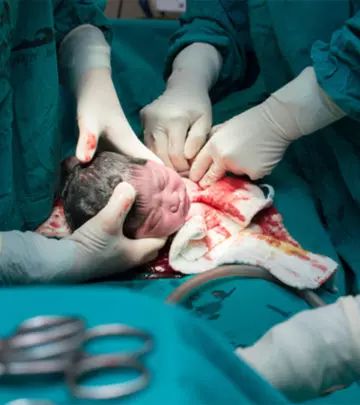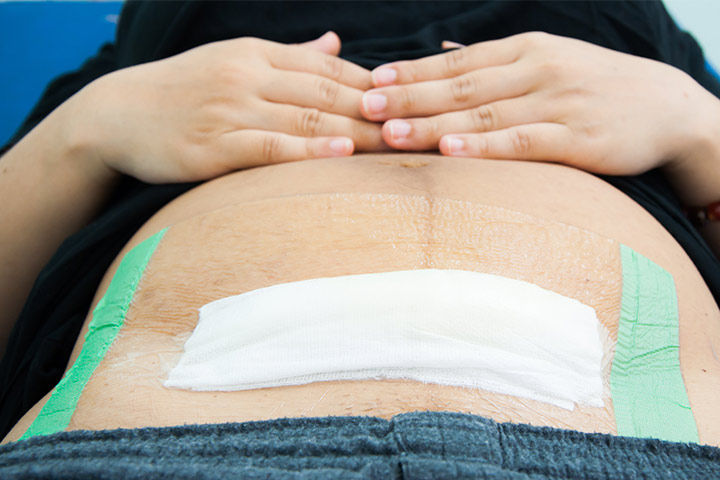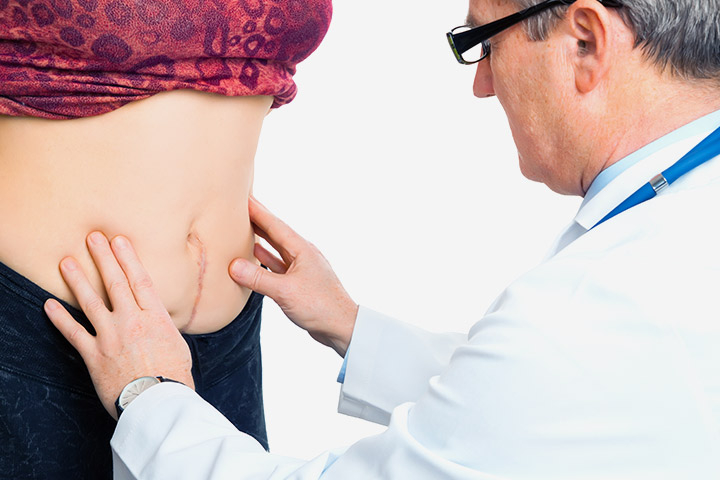
Image: Shutterstock
Pregnancy and motherhood are perhaps the most significant biological changes a woman goes through in her life. The tiny baby, the exhaustion of delivery, the changes in the body, everything seems baffling. And if your delivery has been a cesarean one, then you need some more care in the process of recovery.
C-section is a major surgical procedure and the body is likely to be prone to infections, given the fatigue of birthing. The side effects of a C-section birth are already known, and though you will be advised proper rest and care to heal the stitches, there are some health markers that you must keep in mind.
If you think you might be showing any of the following symptoms, consult your doctor and get checked for the possibility of any infection:
1. High temperature
Having a low-grade fever might be normal after going through the crucial stages of surgery and birthing. But if you think you are suffering from high temperature post delivery, consult a doctor. If the temperature continues to be above 104o F, then it might be indicative of infection in the body.
2. Foul smell
If there is a yeast infection or dermatitis, the area of the incision can be smelly. You must keep it dry and well ventilated whenever you can. Many people recommend using a blow dry at low temperature after a shower so that wetness doesn’t affect the stitches. Take an appointment if the smell is persistent.
3. Flu bug
If you get symptoms that are generally associated with flu, including cold and cough, fever and chills, soreness and extreme exhaustion, it could be a sign of infection. During this time, the body is vulnerable and susceptible to illnesses. It is better to get examined because your new born can also be affected.
4. Warm to touch
Post surgery, some amount of redness and tenderness is expected in the stitches, but such symptoms usually start healing in a few days. In case you find that the area of incision continues to be warm when touched, and the adjoining area of skin also looks reddish, it might suggest an infection that needs to be treated right away.
5. Pus due to wound infection
Some amount of discharge coming from the wound is considered normal. But if you feel that there is an increase in pain and the discharge turns thicker, and greenish or yellowish in colour, it means an infection. Get it treated as soon as possible.
6. Swelling and inflammation
If the swelling and pain in your site of the wound/surgery is increasing instead of going away, it could be an infection. Sometimes even the legs, thighs and ankles get inflamed. It is better to see a doctor than wait.
To prevent chances of infection, some precautionary steps can be taken. They include:
- Ample rest that ensures proper healing and healthy growth of tissues at the infection site.
- Sufficient fluid intake to drain the bugs away and keep the body hydrated.
- Eating nutritious food to gain the strength lost during birthing. It also boosts the immunity and helps you be stronger.
- Little walks to keep your limbs a bit active and avoid swelling. Never take stairs or over-tire yourself.
- Keep the area of incision clean and dry.
- Take recommended pain-killers if you are in pain. Don’t take any medication without consulting the doctors.
- Wear loose clothing to avoid unnecessary brushing against the wound.
- Give support to your site of the incision when coughing or deep breathing, to avoid undue stress in the area.
It is normal to get wound infections after C-section surgeries. But it important to get them treated. Otherwise, they lead to further complications like severe pain and inflammation, scarring, and even corrective surgeries. So, if any of the above symptoms are bothering you, fix an appointment with a doctor.














